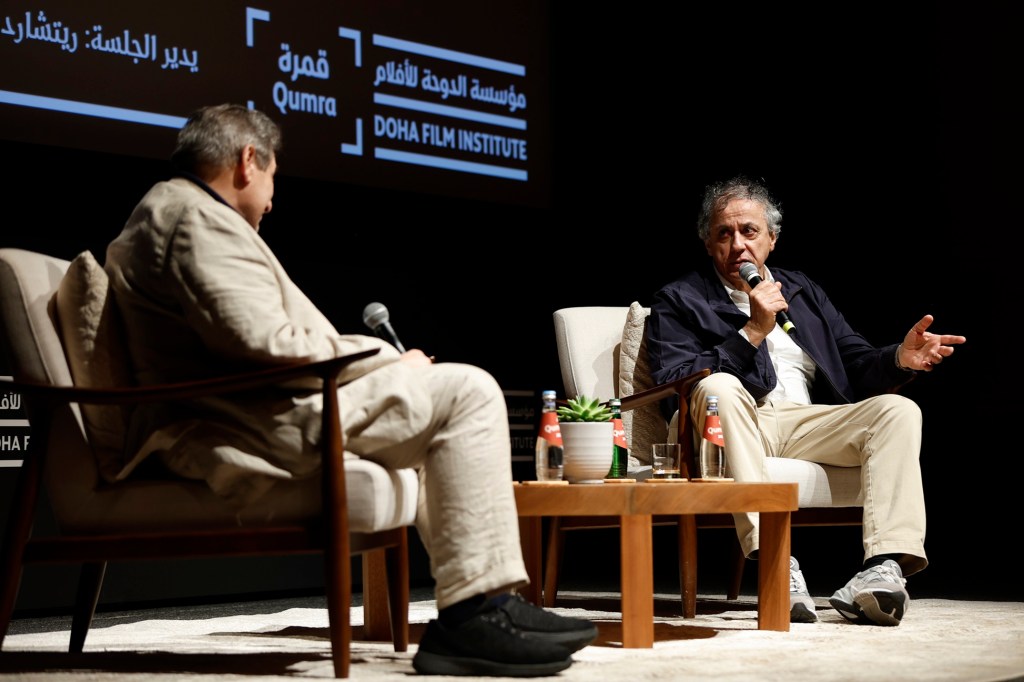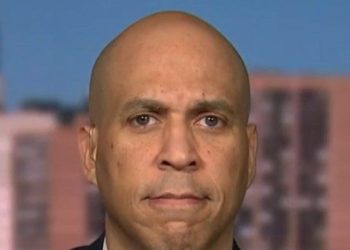Bong Joon Ho, Safdie brothers and Alejandro G. Iñárritu collaborator Darius Khondji may be regarded as one of the most innovative cinematographers of his generation, but he still has a soft spot for celluloid.
Speaking in a masterclass at the Doha Film Institute’s Qumra event over the weekend, Khondji made an appeal to camera makers to revive film models which have not been manufactured since the early 2000s at the latest.
Clarifying his comments to Deadline after the masterclass, Khondji explained: “This is so important. Film cameras are from the 80s. They have not been updated. The camera bodies, the system, the viewing systems… they [directors] are all using old cameras, which is fine, but they’re almost disappearing little by little.”
“People like Panavision or Arri should start investing and putting money into making new film cameras,” he continued. “So many young filmmakers all around the world, everywhere in every country, would dream to shoot films on film but there’s not enough cameras.”
Watch on Deadline
“I was looking at the trailer for Paul Thomas Anderson’s new film,” he continued, referring to the director’s upcoming thriller One Battle After Another. “It’s written filmed in VistaVision, which is eight perforation, long format and amazing quality.”
The camera which was discontinued in the 1950s was also used by Lol Crawley on The Brutalist, for which he won the Best Cinematography award this year.
“It’s a very old camera… Nobody makes these cameras today but if they were, a lot of people would start shooting with them, and Kodak would come up and make more film stock,” commented Khondji.
He added that his love of celluloid did not mean he was against filming on digital, noting he regularly moves between the two, having recently shot Josh Safdie’s Marty Supreme mainly on film and Ari Aster’s Eddington on digital.
“I just think people who really want to make films with celluloid, should be able to do it. It’s staying, it’s not disappearing at all. It was going to disappear, and then it came back,” he said.
“I don’t want to say that it’s all about film now and people should never shoot on digital. Digital is fantastic. I’m shooting on digital all the time but there are people like Wes Anderson or Josh Safdie who like to shoot on film. Eddington was on digital. We would have loved to shoot on film, but it was too expensive, and that’s the thing, it should be a bit more democratic. It would be good if other great filmmakers could shoot on film too.”
Questioned on his thoughts about what impact AI will have on cinema and the cinematography profession, Khondji revealed he had recently embraced ChatGPT, after an assistant director loaded it onto his phone, but that he had yet to form an opinion on what the technology means in the long run.
“People shouldn’t be against new technology, they should embrace it, accept it, but there are things that should not be destroyed. If we destroy the platform of film, if we make it disappear, if we just destroy the history of what has been before, we destroy our culture. We destroy everything,” he said.
“Film is quite special. When I was shooting Josh Safdie’s film, some in digital, and most of it on film. He said, ‘Film has something very special.’ It has a special magic quality on skin. It has a special presence that digital doesn’t have. Digital is always so perfect. When we shoot a digital scene, we always try to make it a bit less perfect. We use old lenses, we add grain, we use lenses that have a fall off all around. We do this on film too in a way, but on digital, it’s almost as if it needs another generation to figure it out… one thing for sure is that we shouldn’t close any doors.”
In spite of his openness to new formats and technology, which he has demonstrated across his career as one of the first adopters of digital, Khondji also revealed in his masterclass how he was not a huge fan of 3D and Imax.
“I just shot a commercial in 3D and I really don’t like it all. I would turn down a movie in 3D… we make the illusion of 3D in film all the time. I don’t like this 3D thing… it’s unappealing and ugly,” he said, noting there were some exceptions to his rule such as Ridley Scott’s Avatar.
On Imax, he revealed that he and Bong Joon Ho had been approached by the company ahead of the shoot for Mickey 17.
“They asked us if we could shoot it in 1.40, in the long format, so they could do a proper 1.90 release. We said ‘no’. Bong and I wanted to do the film in 1.85 and that was the format. We didn’t want to give it to Imax for it to have a special release in the Imax format.”
“I am not a big fan of putting things on Imax for sensationalism… I like films like Walter Salles films’ with true stories,” he continued, adding, however, that he had enjoyed watching Christopher Nolan’s Imax productions Dunkirk and Oppenheimer.
The masterclass also touched on Khondji’s early career working on commercials and music videos in the 1980s, with a focus on the video he shot with UK director Chris Cunningham for Madonna’s 1988 track Frozen.
“They were really like experiments… in the 80s, when I started, they were unknown, especially music videos. They were a land of experimentation… but it was very important for me to shoot short narrative films as well and not shoot only commercials,” he said.
“Some commercials were very interesting because the artists were looking for something else… you could feel that they were playing with the medium… It was really great to experiment on this. I was doing shooting tests all the time and everything was on film.”
He recalled the originality of Cunningham and the Frozen shoot in the Cuddeback Lake in the Mojave Desert.
“There was a crazy rain that happened at the end of the shoot. All the big vehicles, trucks got stuck in the mud. It was a crazy story. I think deserts can engender crazy things. They’re very powerful. You don’t mess with the desert.”
It was Khondji’s work in the music video field that secured him his second feature-film credit on his 1991 breakthrough Delicatessen by Jean-Pierre Jeunet and Marc Caro.
“Both of the directors were starting and had created a world that had to be shot on stage. For me, it was all new, placing the lights, creating an environment… everything was very new for them too,” he recounted.
Talking to Deadline after the masterclass about, Mickey 17, the most recently released film in which he was involved, Khondji said he regarded the film as a success even if its U.S. box office had not lived up to expectations.
“Mickey 17 really has an aura. People who’ve seen the film love it but the general audience hasn’t seen it. It didn’t make a box office in the US, but in France, apparently, it did really well. I’m actually sad that more people haven’t seen it because those who have seem to enjoy it so much… I’ve had more messages for this film than any other about how fun it is and exciting it is, and how premonitory it was, and a lot of qualities of things that I didn’t think of when we were making it. I just wish more people would see it.”
The post Darius Khondji Appeals To Camera Makers To Revive Discontinued Film Models As Directors Re-Embrace Celluloid – Qumra appeared first on Deadline.




